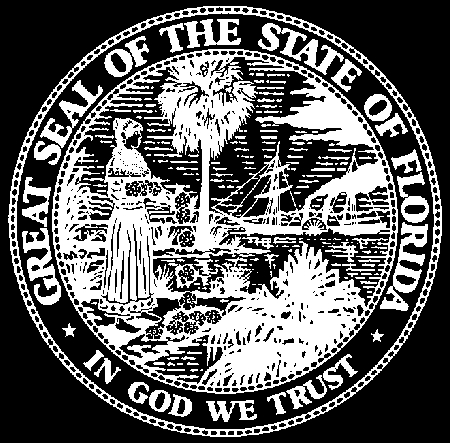FLORIDA DEPARTMENT OF EDUCATION
Request for Application (RFA)
Bureau / Office
K-12 Public Schools/Student Achievement/Bureau of Student Assistance/Title I Programs and
Academic Intervention Services
Program Name
Title I, Subpart 2, Local Agency Delinquent Program
Specific Funding Authority (ies)
No Child Left Behind Act of 2001, P.L. 107-110, Title I, Subpart 2; CFDA #84.010
Funding Purpose/Priorities
To support the operation of local educational agency (LEA) programs that involve collaboration with
locally operated facilities to carry out high quality educational programs to prepare eligible children for
secondary school completion, training, employment, or further education; to provide activities to
facilitate the transition of such children and youth from the correctional programs to further education
or employment; and to operate programs in local schools for children and youth returning from
correctional facilities, as well as programs which may serve at-risk children and youth.
Type of Award
Discretionary/Non-Competitive
Total Funding Amount
Preliminary:
$8,281,496.00 (Preliminary Allocation for qualified school districts are included as
attachment to this Request for Application)
Budget Period
July 1, 2006 – June 30, 2007
Program Performance Period
July 1, 2006 – June 30, 2007
DOE 900 E
1
Revised 01/2006
Target Population
Children and youth in local institutions for neglected and/or delinquent children.
Eligible Applicant(s)
Florida school districts (referred to as Local Educational Agencies, or LEAs) with youth receiving
educational programs through locally operated institutions for neglected and/or delinquent children and
youth.
Application Due Date
June 30, 2006
The due date refers to the date of receipt in Grants Management. For Federal programs, the
project effective date will be the date that the application is received within DOE meeting
conditions for acceptance, or the date of receipt of the Federal Award Notification, whichever
is later. For State programs, the project effective date will be no earlier than the effective date
of the legislative appropriation, usually July 1. The ending date can be no later than June 30, of
the fiscal year unless otherwise specified in statute or proviso.
Contact Persons
Technical Support with On-line Application:
Felicia Williams-Elliott, Program Specialist, Bureau of
Student Assistance by phone at (850) 245-0672; email at felicia.elliott@fldoe.org or contact your Title
Regional Program Specialists by visiting - http://www.firn.edu/doe/title1/title1reg_contacts.html.
Grants Management: Kinisha Murphy, Grants Specialist II, Bureau of Grants Management; (850) 245-
0496, Suncom 205-0496; Kinisha.Murphy@fldoe.org
Assurances
The Department of Education has developed and implemented a document entitled, General
Terms, Assurances and Conditions for Participation in Federal and State Programs, to comply
with:
•
?
34 CFR 76.301 of the Education Department General Administration Regulations (EDGAR)
which requires local educational agencies to submit a common assurance for participation
in federal programs funded by the U.S. Department of Education;
•
?
applicable regulations of other Federal agencies; and
•
?
State regulations and laws pertaining to the expenditure of state funds.
In order to receive funding, applicants must have on file with the Department of Education,
Office of the Comptroller, a signed statement by the agency head certifying applicant
adherence to these General Assurances for Participation in State or Federal Programs. The
complete text may be found at
http://www.firn.edu/doe/comptroller/gbook.htm
DOE 900 E
2
Revised 01/2006
School Districts, Community Colleges, Universities and State Agencies
The certification of adherence filed with the Department of Education Comptroller’s
Office shall remain in effect indefinitely unless a change occurs in federal or state law,
or there are other changes in circumstances affecting a term, assurance, or condition;
and does not need to be resubmitted with this application.
Funding Method
Federal Cash Advance –On-Line Reporting required monthly to record expenditures.
Federal cash advances will be made by state warrant or electronic funds transfer (EFT) to a
recipient for disbursements. For federally funded projects, requests for federal cash advance
must be made on the Electronic Federal Cash Advance Request System. If at times it is
determined that disbursements are going to exceed the amount of cash on hand plus cash in
transit, an on-line amendment can be made prior to the due date of the next Federal Cash
Advance distribution on the Electronic Federal Cash Advance Request System.
Fiscal Requirements
Supporting documentation for expenditures is required for all funding methods. Examples of
such documentation include: invoices with check numbers verifying payment, and/or bank
statements; all or any of which must be available upon request.
Applicants should note the following fiscal requirements:
1.
?
All funded projects and any amendments are subject to the procedures outlined in the
Project
Application and Amendment Procedures for Federal and State Programs
(Green Book) and the
General Assurances for Participation in Federal and State Programs
. These procedures and
documents can be accessed online at www.firn.edu/doe/comptroller/gbook.htm.
2.
?
Indirect costs shall only apply to federal projects. LEAs are not required to develop an indirect cost
proposal, but if they fail to do so, they will not be allowed to recover any indirect costs.
Restrictions to the amount and percentage that can be charged to a project’s administration, which
may include indirect costs, will be specified in the approved project award notification or
amendment proposal, where applicable.
3.
?
Funded applicants will receive their allocation via Federal Cash Advance. Request for Federal cash
advances must be made on the Electronic Federal Cash Advance Request System. If it is
determined at any time that the disbursements are going to exceed the amount of cash on hand plus
cash in transit, an online amendment can be made prior to the due date of the next Federal cash
advance distribution.
4.
?
Reporting of monthly disbursements is required by the 20th of the month following the month of
disbursement from each agency receiving these Federal funds. The recipients must report
disbursements electronically on the On-Line Disbursement Reporting System. All project
recipients must submit a complete DOE 399 form, Final Project Disbursement Report, by the date
specified on the DOE 200 form, Project Award Notification.
DOE 900 E
3
Revised 01/2006
NARRATIVE SECTION
Project Design-Narrative
Each LEA requesting assistance under Title I, Subpart 2, Local Agency Delinquent Program must
submit an application to the Department of Education that responds concisely to each of the
components indicated below, as reflected in Section 1423 of the No Child Left Behind Act of 2001.
Please label each section of the narrative to correspond to the number of the requested item.
1.
?
Describe the program(s) to be assisted. Provide specific descriptions of the facilities to be served
under this program, including the type of facility, a general description of the student population,
and length of commitment (if applicable). Identify program goals and expected student outcomes.
2.
?
Describe the current formal agreement(s) regarding the program(s) to be implemented between the
local educational agency and correctional facilities and alternative schools serving children and
youth involved with the juvenile justice system. If copies of agreements are provided, the
agreement must bear evidence that it is in effect as of the 2006-2007 school year.
3.
?
Describe how participating schools will coordinate with facilities working with delinquent children
and youth to ensure that such children and youth are participating in an education program
comparable to that being implemented at the public school such youth would attend.
4.
?
Describe the program operated by participating schools for children and youth returning from
correctional facilities and appropriate services that each school will provide.
5.
?
Describe the characteristics (including learning difficulties, substance abuse problems, and other
special needs) of the children and youth who will be returning from correctional facilities and
appropriately identify other at-risk children and youth expected to be served by the program.
Describe how the school will coordinate existing educational programs to meet the unique
educational needs of such children and youth.
6.
?
Describe how schools will coordinate with existing social, health, and other services to meet the
needs of students returning from correctional facilities, at-risk children or youth, and other
participating children or youth, including prenatal health care and nutrition services related to the
health of the parent and the child or youth, parenting and child development classes, child care,
targeted re-entry and outreach programs, referrals to community resources, and scheduling
flexibility.
7.
?
Describe any partnerships with local businesses to develop training, curriculum-based youth
entrepreneurship education, and mentoring services for participating students.
8.
?
Describe how the program will involve parents in efforts to (a) improve the educational
achievement of their children, (b) assist in dropout prevention activities, and (c) prevent the
involvement of their children in delinquent activities.
9.
?
Describe how the program under this subpart will be coordinated with other Federal, State, and
local programs, such as programs under Title I, Part A of Public Law 107-110 and vocational and
technical education programs serving at-risk children and youth.
10. Describe how the program will be coordinated with programs operated under the Juvenile Justice
and Delinquency Prevention Act of 2002, and other comparable programs, if applicable.
DOE 900 E
4
Revised 01/2006
11. Describe how schools will work with probation officers to assist in meeting the needs of children
and youth returning from correctional facilities.
12. Describe the efforts participating schools will make to ensure correctional facilities working with
children and youth are aware of a child’s or youth’s individualized education program.
13. Describe the steps participating schools will take to find alternative placements for children and
youth interested in continuing their education but who are unable to participate in a regular public
school program.
14. Describe any additional services provided to youth, such as career counseling, and assistance in
securing student loans and grants.
15. Describe how this project will support the Florida Department of Education’s reading initiative,
Just Read, Florida! Information about this initiative is available at http://www.justreadflorida.org.
16. Describe how information about the project(s) will be disseminated and marketed to the
appropriate populations.
17. Address how the applicant will provide annual student progress reports to state agencies, local
operating agencies, juvenile justice centers, community agencies, and parents.
18. Provide a transition plan that documents the steps that have been taken to ensure that the
transitional needs are met for students returning to the district or an alternative education program
from correctional facilities.
19. Describe how the district will meet the following evaluation and accountability requirements:
a.
?
The district must consult with teachers and parents of the children concerning the design and
implementation of the Title I program and may choose to establish and use parent advisory
councils.
b.
?
The district must evaluate its program(s) using disaggregated data on participants by gender,
race, ethnicity, and age, and must show how the results will be used to plan and improve
subsequent programs for participating children and youth.
c.
?
The district must submit its annual evaluation results for the 2006-2007 program year to the
Florida Department of Education no later than October 15, 2007.
d.
?
The district must use multiple and appropriate measures of individual student progress
?
including, but not limited to, statewide assessment data.
?
Support for Reading/Strategic Imperatives
Describe how the proposed project will incorporate reading initiatives and one or more of the
Florida State Board of Education (SBE) strategic imperatives.
URL:
http://www.fldoe.org/meetings/2005_01_18/StratPlanDetails.pdf
DOE 900 E
5
Revised 01/2006
Dissemination/Marketing
Describe methods /strategies you will use to disseminate and market information about the
project to appropriate populations.
Pursuant to item 16 in the Project Design section, applicants should indicate how information about the
project will be disseminated and marketed to appropriate populations.
Reporting Outcomes
Pursuant to items 17 and 19(c) in the Project Design section, applicants should indicate how project
outcomes will be reported to the Florida Department of Education and other stakeholder groups on an
annual basis.
For Federal Programs - General Education Provisions Act (GEPA)
Provide a concise description of the process to ensure equitable access to, and participation of
students, teachers, and other program beneficiaries with special needs
.
For details refer to URL:
http://www.ed.gov/fund/grant/apply/appforms/gepa427.pdf
Equitable Services for Private School Participation
In accordance with P.L. 107-110, Title IX, Part E Uniform Provisions, Subpart 1, Section
9501, the applicant must provide a detailed plan of action for providing consultation for
equitable services to private school children and teachers with the local education
agency(ies) service area. For details, refer to URL:
http://www.ed.gov/policy/elsec/leg/esea02/pg111.html
.
Conditions for Acceptance
?
The requirements listed below must be met for applications to be considered for review:
?
1)
Application is received in DOE within the timeframe specified by the RFA
?
2)
Application includes required forms: DOE 100A and DOE 101 - Budget Narrative
?
Form
?
3)
All required forms must have the assigned TAPS Number included on the form
?
4)
All required forms have original signatures by an authorized entity
?
5)
Application narrative responding to all indicated components
?
6)
Application must be submitted to:
?
Office of Grants Management
?
Florida Department of Education
?
325 W. Gaines Street, Room 344
?
Tallahassee, Florida 32399-0400
?
NOTE: Applications signed by officials other than the appropriate agency head identified
above must have a letter signed by the agency head, or documentation citing action of the
governing body delegating authority to the person to sign on behalf of said official.
Attach the letter or documentation to the DOE 100A when the application is submitted.
DOE 900 E
6
Revised 01/2006
The application must be submitted through the Department’s online format. Please submit the original
and one (1) copy of the completed application, printed from the online format, to the Bureau of Grants
Management. The original copy of the completed application must have the original signature of the
district superintendent (preferably in blue ink) where appropriate.
The requirements listed below must be met for applications to be considered for review:
Application includes all elements of substantially approvable form.
a.
DOE 100A Form bearing the original signature of the district superintendent
b.
Application narrative responding to all indicated components
c.
Completed DOE 101, Budget Narrative Form
Funds shall be obligated no earlier than the date a complete project application is received by the
Bureau of Grants Management or the effective date of the federal grant award, whichever is later.
Method of Review
All on-line project applications, including budget forms shall be reviewed by FDOE staff in
accordance with established project application review checklists and requirements set-forth in the No
Child Left Behind Act of 2001; applicable non-regulatory guidance and other applicable federal
regulations and guidelines.
DOE 900 E
7
Revised 01/2006
2006-2007 Preliminary Title I, Part D,
Local Agency Delinquent Program Allocation
Allocations Schedule
Agency
#
Agency Name
Allocation
Amount
Reimb.
Options
01 Alacha
$26,732.79
C
03 Bay
$72,097.53
C
05 Brevard
$132,853.88
C
06 Broward
$288,390.12
C
08 Charlotte
$25,112.62
C
09 Citrus
$60,756.35
C
11 Collier
$47,794.99
C
13 Miami-Dade
$370,208.67
C
14 DeSoto
$197,660.65
C
16 Duval
$150,675.74
C
17 Escambia
$106,931.17
C
22 Glades
$24,302.54
C
24 Hamilton
$32,403.38
C
25 Hardee
$36,453.81
C
27 Hernando
$17,011.78
C
28 Highlands
$11,341.18
C
29 Hillsborough
$2,125,662.02
C
30 Holmes
$28,352.96
C
32 Jackson
$9,721.02
C
33 Jefferson
$17,011.78
C
35 Lake
$121,512.69
C
36 Lee
$49,415.16
C
37 Leon
$153,916.08
C
38 Levy
$20,252.12
C
39 Liberty
$110,981.59
C
40 Madison
$177,408.53
C
41 Manatee
$158,776.58
C
Reimbursement Options
Key:
C
?
Federal
Cash
Advance
Q Advance
Payment
S
?
Quarterly
Advance
to Public Entity
R
?
Reimbursement
of
Expenditure
P Reimbursement
with Performance
DOE 900 E
8
Revised 01/2006
Allocations Schedule Continued
Agency
#
Agency Name
Allocation
Amount
Reimb.
Option
42 Marion
$101,260.58
C
43 Martin
$86,679.05
C
44 Monroe
$2,430.25
C
45 Nassau
$50,225.25
C
46 Okaloosa
$314,312.83
C
47 Okeechobee
$206,571.58
C
48 Orange
$278,669.11
C
49 Osceola
$174,168.19
C
50 Palm
Beach
$511,973.48
C
51 Pasco
$176,598.45
C
52 Pinellas
$552,477.71
C
53 Polk
$370,208.67
C
54 Putnam
$32,403.38
C
55 St.
Johns
$358,057.40
C
56 St.
Lucie
$24,302.54
C
57 Santa
Rosa
$31,593.30
C
58 Sarasota
$9,721.02
C
59 Seminole
$78,578.21
C
61 Suwannee
$41,314.32
C
63 Union
$3,240.34
C
64 Volusia
$245,455.64
C
66 Walton
$24,302.54
C
67 Washington
$33,213.47
C
$8,281,495.00
TOTAL
?
DOE 900 E
9
Revised 01/2006
FLORIDA DEPARTMENT OF EDUCATION
Project Application
TAPS Number
07A027
Please return to:
Florida Department of Education
Office of Grants Management
Room 344 Turlington Building
325 West Gaines Street
Tallahassee, Florida 32399-0400
Telephone: (850) 245-0498
Suncom: 205-0498
A
)
Program Name:
Title I, Local Agency Neglected and
Delinquent Program – Part D, Subpart
I
DOE USE ONLY
Date Received
B) Name and Address of Eligible Applicant:
Project Number (DOE Assigned)
C
)
Total Funds Requested:
$
DOE USE ONLY
Total Approved Project:
$
D
)
Applicant Contact Information
Contact Name:
Mailing Address:
Telephone Number:
SunCom Number:
Fax Number:
E-mail Address:
CERTIFICATION
I, ______________________________________________, (
Please Type Name)
do hereby certify that all facts,
figures, and representations made in this application are true, correct, and consistent with the statement of general
assurances and specific programmatic assurances for this project. Furthermore, all applicable statutes, regulations, and
procedures; administrative and programmatic requirements; and procedures for fiscal control and maintenance of
records will be implemented to ensure proper accountability for the expenditure of funds on this project. All records
necessary to substantiate these requirements will be available for review by appropriate state and federal staff. I further
certify that all expenditures will be obligated on or after the effective date and prior to the termination date of the
project. Disbursements will be reported only as appropriate to this project, and will not be used for matching funds on
this or any special project, where prohibited.
Further, I understand that it is the responsibility of the agency head to obtain from its governing body the authorization
for the submission of this application.
E)
Signature of Agency Head
________________________________________________
DOE 100A
Revised 01/03
Page 10
John L. Winn, Commissioner
Instructions for Completion of DOE 100A
A.
If not pre-printed, enter name of the program for which funds are requested.
B.
Enter name and mailing address of eligible applicant. The applicant is the public or non-public
entity receiving funds to carry out the purpose of the project.
C.
Enter the total amount of funds requested for this project.
D.
Enter requested information for the applicant’s contact person. This is the person responsible for
responding to all questions regarding information included in this application.
E.
The original signature of the appropriate agency head is required.
The agency head is the
school district superintendent, university or community college president, state agency
commissioner or secretary, or the president/chairman of the Board for other eligible applicants.
•
Note:
Applications signed by officials other than the appropriate agency head identified above
must have a letter signed by the agency head, or documentation citing action of the governing body
delegating authority to the person to sign on behalf of said official. Attach the letter or
documentation to the DOE 100A when the application is submitted.
Page 11
John L. Winn, Commissioner
A)
Name of Eligible Recipient:
B)
TAPS Number
07A027
Project Number:
(
DOE USE ONLY)
Title I, Subpart 2, Local Agency Delinquent Program
?
FLORIDA DEPARTMENT OF EDUCATIONBudget Narrative Form
?
(1)
FUNCTION
(2)
OBJECT
(3)
ACCOUNT TITLE AND NARRATIVE
(4)
FTE
POSITION
(5)
AMOUNT
C) TOTAL
$
D
OE 101
John L. Winn, Commissioner
Instructions
?
Budget Narrative Form
?
This form should be completed based on the instructions outlined below, unless instructed otherwise in the Request for Proposal (RFP) or
Request for Application (RFA).
A.
Enter Name of Eligible Recipient.
B
.
(DOE USE ONLY)
COLUMN 1
FUNCTION:
SCHOOL DISTRICTS ONLY:
Use the four digit function codes as required in the Financial and Program Cost Accounting and Reporting for
Florida Schools Manual.
Column 2
OBJECT:
SCHOOL DISTRICTS:
Use the three digit object codes as required in the Financial and Program Cost Accounting and Reporting for
Florida Schools Manual.
COMMUNITY COLLEGES:
Use the first three digits of the object codes listed in the Accounting Manual for Florida’s Public Community
Colleges.
UNIVERSITIES AND STATE AGENCIES:
Use the first three digits of the object codes listed in the Florida Accounting Information Resource Manual.
OTHER AGENCIES:
Use the object codes as required in the agency’s expenditure chart of accounts.
COLUMN 3
-
ALL APPLICANTS:
ACCOUNT TITLE:
Use the account title that applies to the object code listed in accordance with
the agency's accounting system.
NARRATIVE:
Provide a detailed narrative for each object code listed. For example:
•
?
SALARIES
- describe the type(s) of positions requested. Use a separate line to describe each type of position.
•
?
OTHER PERSONAL SERVICES
– describe the type of service(s) and an estimated number of hours for each type of
position. OPS is defined as compensation paid to persons, including substitute teachers not under contract, who are
employed to provide temporary services to the program.
•
?
PROFESSIONAL/TECHNICAL SERVICES
- describe services rendered by personnel, other than agency personnel employees,
who provide specialized skills and knowledge.
•
?
CONTRACTUAL SERVICES AND/OR INTER-AGENCY AGREEMENTS
- provide the agency name and description of the service(s)
to be rendered.
•
?
TRAVEL
- provide a description of each type of travel to be supported with project funds, such as conference(s), in
district or out of district, and out of state. Do not list individual names. List individual position(s) when travel funds are
being requested to perform necessary activities.
•
?
CAPITAL OUTLAY
- provide the type of items/equipment to be purchased with project funds.
•
?
INDIRECT COST
- provide the percentage rate being used. Use the current approved rate. (Reference the DOE Green
Book for additional guidance regarding indirect cost.)
COLUMN 4 – MUST BE COMPLETED FOR ALL SALARIES AND OTHER PERSONAL SERVICES.
FTE
- Indicate the Full Time Equivalent (FTE based on the standard workweek for the type of position) number of
positions to be funded. Determine FTE by dividing the standard number of weekly hours (e.g., 35 hours) for
the type of position (e.g., teacher aide) into the actual work hours to be funded by the project.
J
oh
n L. Winn, Commissioner
COLUMN 5
AMOUNT -
Provide the budget amount requested for each object code.
C.
?
TOTAL
-
Provide the total for Column (4) on the last page
.
Must be the same amount as requested on the DOE-100A or
DOE 100B
John L. Winn, Commissioner






